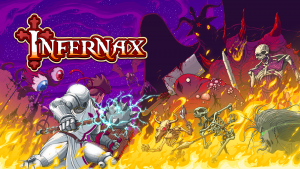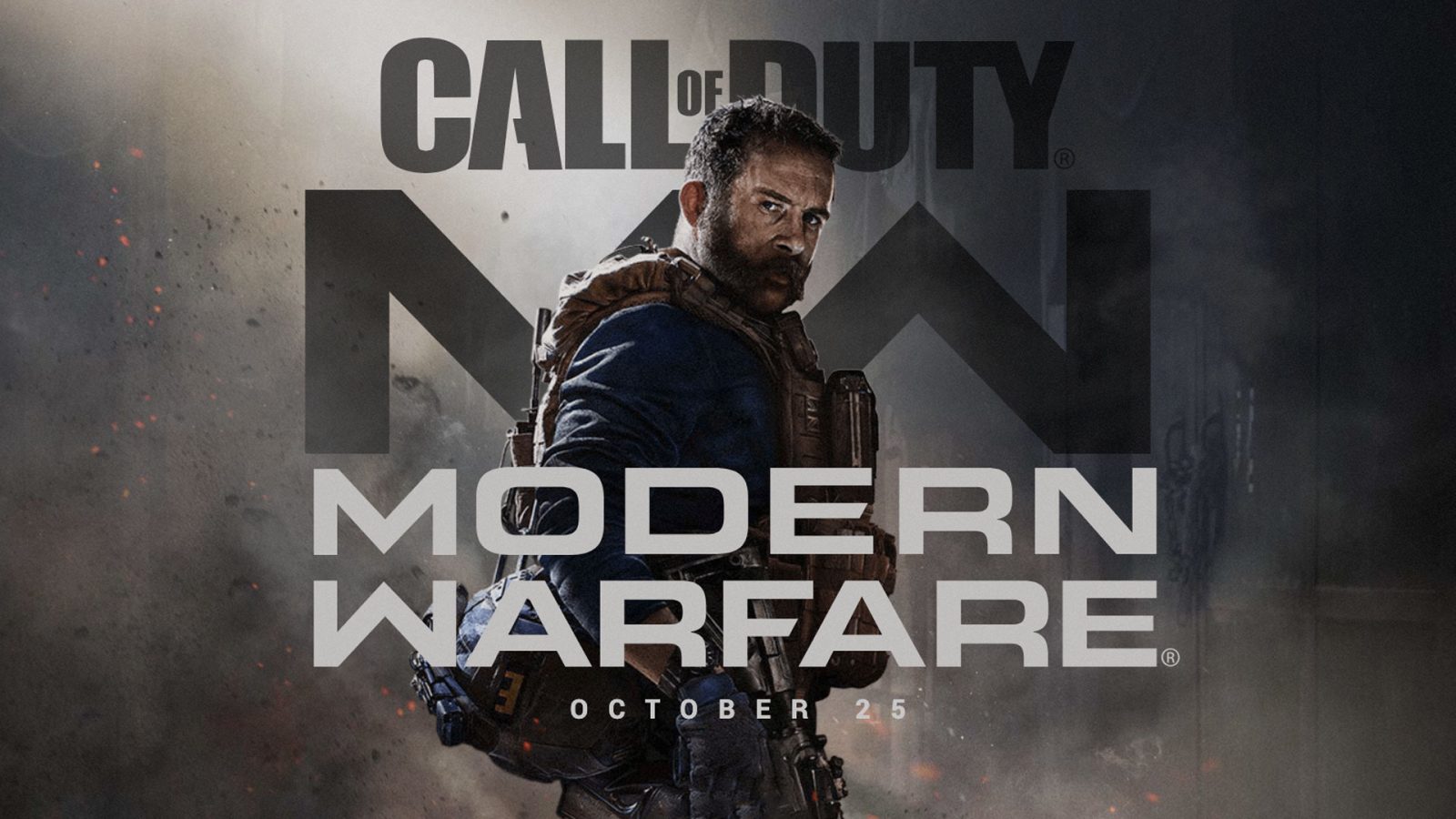
Call of Duty: Modern Warfare, the latest installment in Activision Blizzard’s blockbuster Call of Duty series, hit store shelves a little less than two weeks ago. Fans of the series have been waiting years for the annual shooter franchise to return to the present day. They flocked online, expecting to relive the glory days of the original Modern Warfare trilogy. Instead, what they got was a first-person shooter filled to the brim with frustrating mechanics and questionable design decisions. Now that time has passed and the new title’s metagame has solidified, this much is clear: Modern Warfare needs work.
Modern Warfare has three main modes of play: Campaign, Multiplayer, and Special Ops (Co-Op). The first of these is a fairly enjoyable experience. The game’s Campaign is a soft-reboot of the original trilogy’s story, showcasing the return of SAS Captain John Price, now played by Barry Sloane. Joining him are newcomer player characters Kyle Garrick, an SAS Sergeant, and “Alex” a CIA Special Activities Division operative. Rounding out the cast are Kate Laswell, Alex and Price’s handler, as well as Farah and Hadir Karim, rebel leaders from the fictional country of Urzikstan. The story showcases Price and his team working together with Farah and her rebels to fight off the Russian occupation of Urzikstan, as well as track down the leaders of Al-Qatala, a terrorist organization that launched a recent attack on London’s Piccadilly Circus.
Said campaign is arguably the game’s strongest aspect. Mission design is tight and cinematic, but without as much over-the-top action as previous games in the series. Indeed, the route that Modern Warfare’s campaign takes is more along the lines of a grounded military thriller than a bombastic action movie. Several missions involve Zero Dark Thirty-style raids, with the player character donning night-vision goggles and clearing houses room-by-room, all while trying to discern enemies from civilians in poor visibility. The game does not shy away from more “gritty” themes; in one instance, you gun down a terrorist who was holding a woman hostage, only for the woman to cry out in anguish, pick up the dead man’s rifle, and attempt to take you down as well. At another point, you can be spooked by a mother holding a baby and end up accidentally gunning her down, and watch despondently as your CO chastises you and gently takes the baby from his mother’s arms and places him into a crib. This does not result in a mission failure; instead, you have to live with what you’ve done. Sometimes, people make deadly mistakes in battle. War is not pretty.

These themes continue throughout the game and help to create a compelling story, one more down-to-Earth than the usual Call of Duty fare. The game particularly shines when expounding on the story of Farah and her brother Hadir, including one harrowing scene where the player must control a young Farah and hide from a Russian soldier while searching for sharp utensils with which to incapacitate him. All in all, the game’s campaign is a surprisingly emotional experience, one that doesn’t shy away from showcasing the horrors of war. That said, it is not perfect;
from a gameplay perspective the game’s missions can seem overly linear and cinematic, not to mention quite short. Large portions of some levels simply involve moving your character forward while they have a conversation with the rest of the cast.
In addition, the villains can come off as cartoonishly evil; the Russian soldiers in-game are often portrayed as complete sadists. Not to mention the fact that Al-Qatala literally means “The Killers” in Arabic. Subtle, Infinity Ward. This ties into the more overarching issue of portraying the west as the unambiguously “good” faction, of particular note being an piece of dialogue in the game that describes Russia bombing a crowded highway in Urzikstan into oblivion, something that happened in Kuwait/ Iraq in the real life Gulf War, except it was carried out by the United States. While its not exactly a war crime, its also not something you’d brag at the metaphorical lunch table about either, and the fact that the writers took an infamous event and transplanted it into their story on the “other” side has rubbed many people the wrong way. That said, these issues are somewhat mitigated by the portrayal of the protagonists as much more morally grey when compared to the original Modern Warfare games, such as when they use a terrorist’s wife and child as leverage over him during an interrogation. While the campaign has issues, they are not enough to detract from an overall positive experience.
Unfortunately, the same can not be said for the game’s other two modes, Multiplayer and Special Ops. The SpecOps Co-op mode is particularly notable due to the fact that it is an extremely barebones experience. Available to play are four long missions that take place on a sprawling map that looks suspiciously like a recycled battle royale arena. These missions make no use of their semi-open world nature, instead directing players to cookie-cutter objectives on foot and throwing uber-difficult enemies at them from all directions. Most teams can only beat the first mission, Operation Headhunter, by having one player camp on the roof of a stadium where they cannot be harmed by enemies, which allows the rest of the team to respawn endlessly. In addition to these missions is a “Classic Spec Ops” mode, which features precisely one mission called “Safeguard.” Defend a village for three waves and get to the extraction point, and bam, you’ve completed the mission! And that’s it. No elaborate experiences like a train heist or a nighttime raid, no 3-star system, and next to no rewards. It is an incredibly disappointing experience, one which was falsely advertised. All that can really be said about it is that Infinity Ward needs to overhaul it completely in order for it to become enjoyable. In the meantime, keep your distance, unless you like wasting time.
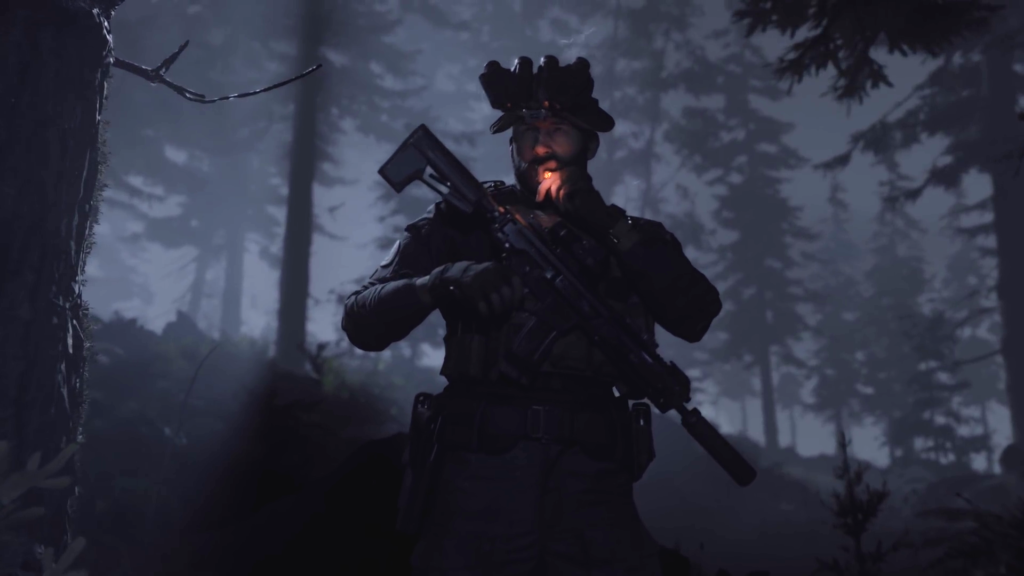
Then of course, there’s multiplayer. While not as barebones of an experience as Co-op, it is arguably more disappointing. On the surface, the gameplay looks great: tight gunplay, a variety of unlocks and killstreaks, and interesting new modes and rules to keep the series fresh. Indeed, weapon handling and movement is at its peak in this installment, with detailed, fluid animations and responsive controls making combat a pleasant experience. The create-a-class system is another welcome change, with the overly restrictive “Pick-10” system of previous installments replaced with the new “Gunsmith” mechanic. Players can level up and customize their various weapons with a myriad of different attachments, including sights, grips, magazines, and barrels. Each attachment alters the appearance of the weapon and both improves and impairs various stats, making each different option a trade-off to strategize for and not a straight upgrade. Up to five attachments can be placed on a gun. Finally, new modes like the hectic, vehicle-filled Ground War and the cage-fight style Gunfight are refreshing new takes on the franchise’s gameplay.
Unfortunately, these new, well-implemented features are overshadowed by an extensive list of negatives. New and long-time players alike will be baffled and frustrated by some of the changes to this game’s central mechanics. For instance, you know lobbies? The quintessential multiplayer game feature that keeps groups of players together for consecutive matches? Yeah, those don’t exist in Modern Warfare. Instead, players join a match through a non-descriptive “quick play” option for most default game modes, get placed in a match, and then, when that match is over, matchmaking searches for another server for them to join. When your match ends, you all go your separate ways, there is no way to stay grouped up without manually inviting others from previous matches into your party. Gone are the days of automatically sticking around with a new friend you made in the last match or challenging a team you just lost to on the arena of your choice. Because, guess what, there’s no map voting either! You get a map and a game mode, and that’s it, no ifs, ands, or buts.
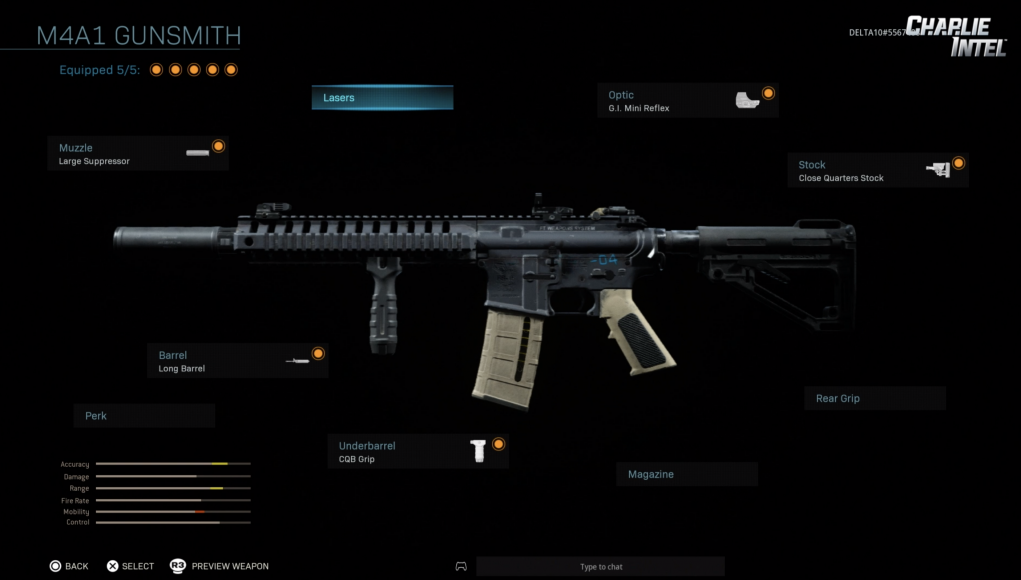
This is a particular problem because of another negative: the maps themselves. The game has a fairly large collection of arenas, some of which may very well be the worst-designed maps in Call of Duty history. Particularly notable is Piccadilly, set in London. With a size that seems best suited to 8v8 matches (in a game where the options are either 6v6 or 10v10), the matches here are irritating, with poor map flow hampering movement. Camping spots are everywhere, and it is easy for one team to spawn trap the other due to the near complete lack of flanking routes. Matches on this map, especially in domination, frequently result in the complete supremacy of one team while the other struggles to survive even five seconds after spawning. These issues apply to several other maps as well, such as Euphrates Bridge, where the aforementioned bridge serves as the high ground. If you join a match-in-progress on Euphrates, expect to be pinned down behind scant cover as one team controls both levels of the bridge with snipers and assault rifles. These problems aren’t just limited to the traditional maps, either. The Ground War battlefields feature notorious camping spots for the powerful tanks, and are filled with accessible rooftops for snipers to pick off their hapless opponents below.
These map issues, however, would not be as severe were it not for how the game is balanced. The game seems designed to feature a static “camping” playstyle. Time-to-kill is notoriously fast; any players looking to play tactically have to be quick on their feet in order to not get picked off. This issue is further exacerbated by the early unlock level of the M4A1, an assault rifle which has a blisteringly fast rate of fire, good damage, and surprisingly controllable recoil. Expect to see a lot of players running the “Overkill” perk (two primary weapons) in order to wield both the M4 and the 725, an over-under shotgun that has a range more akin to a sniper rifle than a close-quarters firearm. Matches will quickly devolve into players sweeping close-quarters with the 725 and picking you off from frustratingly-long ranges, while attempts to break out of CQB situations will be met with a rapid cacophony of cracks as an enemy you can barely see peppers you with their M4A1. In contrast to other, more artistic/cartoony first-person games, enemy silhouettes blend in with their backgrounds much more easily, and extreme lighting differences between indoors and outdoors make it even more difficult to see where you are being shot from.
Oh, and another piece of equipment, the flash guard, hides players muzzle flash and is the first barrel attachment unlocked for many guns. It seems like Infinity Ward is just rubbing salt in the wound here.
Of course, the logical choice would to stick indoors, and only go out in the open when necessary. Well, then be prepared to run into claymores constantly. These trip-mines, again, are unlocked fairly early, and are ubiquitous in all modes of play. Trying to flush out a window camper? Claymore. Trying to plant the bomb in Search and Destroy? Claymore. Even spotting one from a decent distance away can still result in your death, as both the activation and explosion radius are ridiculously large. Even standing behind the claymore (which has a directional blast radius depending on where the front of it is oriented, as in real life) and shooting it to remotely detonate it frequently results in death. These mines are infuriating, and they are everywhere, not helped by the fact that the “Restock” perk can replenish claymores in a players inventory every 30 seconds.
These issues still would not be so severe, were it not for the fact that Modern Warfare made poorly-thought out changes to enemy tagging. Enemies firing unsuppressed weapons no longer show up on the player’s minimap. Instead, the top of the screen is bordered by a compass, where the red dots of exposed players are displayed instead. This compass adds unnecessary complexity to the process of discerning the location of enemies, as you must point your character in the direction of gunfire and then align the compass dot marker with your view in order to see where they are, instead of simply glancing at a map and continuing your current movement. Even if you are a player that is more adept at reading compasses than maps (maybe you’re a big ARMA fan) good luck tracking them down, as the markers last only a short time and the game’s footstep audio is wildly inconsistent. This is especially apparent on the Ground War map Tavorsk District, where players will frequently fight in skyscrapers. Is your enemy on the fifth floor just below you? Is he a few levels above, or on the roof? Are those actually your own footsteps? Who knows, its a guessing game! This also applies to the game’s “callout” system, where player characters automatically shout out information about enemy players and objectives without prompting from the player. This system does more harm than good; since enemies can hear your callouts, your character will routinely expose their position by shouting like a moron when you are trying to be stealthy. The system, which is designed to enhance communication between teammates even without voice chat, just leads to more confusion, especially when a character will shout “Enemy Spotted” when an opponent is on the very edge of the screen, shrouded in shadow and almost invisible. Prepare for a lot of panicking when your character can see an opponent that you, the player controlling them, cannot.
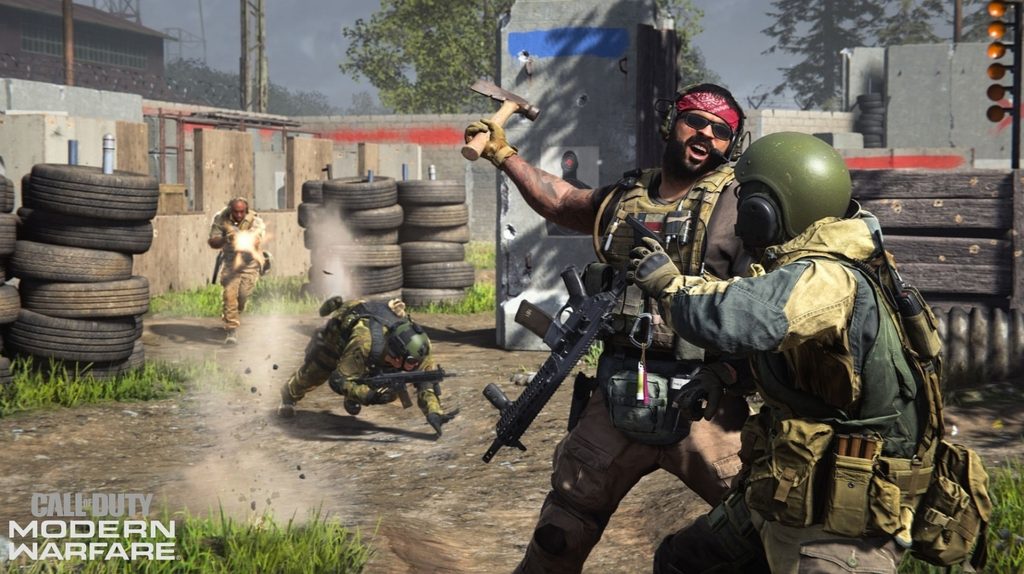
Couple all of these issues with skill-based matchmaking, and well, you have the perfect recipe for a mediocre multiplayer experience. SBMM matches you with players of similar skill level using a hidden ranking system, even in casual playlists (which is to say, at the moment of this writing, every playlist). SBMM makes playing with friends particularly tough, as your party can be at wildly different skill levels that results in an unbalanced, un-fun match for all involved. And even if you make it through these matches with a decent performance, good luck even having that reflected; XP is routinely not given out, challenges reset to 0% progress, and stats sometimes aren’t even tracked. All-in-all, Modern Warfare in its present state is a game that doesn’t want you to progress, or get better, or even be able to enjoy yourself. Infinity Ward’s lack of communication only contributes to this problem.
Of course, some of these issues can be fixed with a patch, such as broken progression tracking and overpowered equipment. Others, however, are baked into the very structure of the game. Issues like map flow, and the lack of lobbies, will take a large amount of overhauling to bring to an acceptable state, while others, such as the absurdly shallow Special Ops mode, are likely to never be overhauled before the next Call of Duty releases. Strong points like the campaign, the overhauled gunplay, and the gunsmith system create a sturdy foundation; unfortunately, the rest of the game is unable to capitalize on it. Overall, Modern Warfare is a discouraging experience, one that will result in longtime fans of the series putting it down and waiting weeks, maybe even months, for changes that will make their experience bearable.
I rate Call of Duty: Modern Warfare at 6/10.

